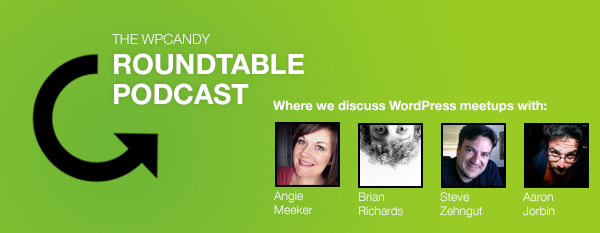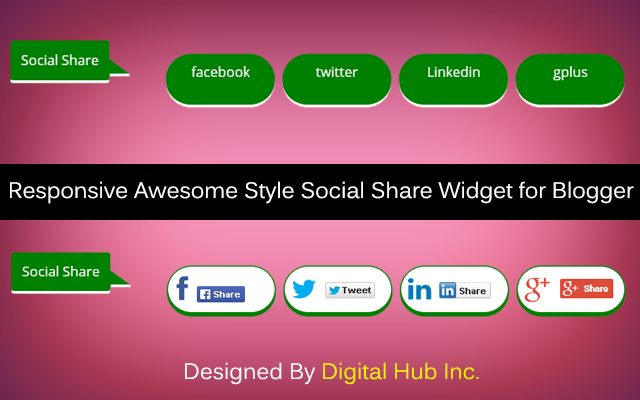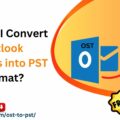This is a guest contribution from Steff Green, of WorkflowMax.
Recently I wrote a post about my experiences as a company looking to hire another blogger for our team. Today I’m putting on my blogger hat and I’m looking at what the experience taught me about how a blogger can improve his/her chances of landing a blogging job at a company.
Who am I? I’m Steff. I used to be a freelance blogger, but one of my clients, WorkflowMax – a cloud-based project management software for service businesses – offered me a full-time position as a blogger, I jumped at the chance.
The advantages of a permanent blogging job
Quite often “make money blogging” gurus focus on the advantages of being a freelance blogger – working for a variety of clients, being in control, multiple income streams, creating passive income through products, etc – while playing down the 9-5 lifestyle. I’ve done them both, and can say that the 9-5 lifestyle definitely has its advantages.
I love blogging, but I didn’t love the 100 emails a day, the client stress, the 80+ hour weeks and the managing of the business itself that came with being a freelancer. By blogging for a company, I get to do what I love – write – all day, about topics that help small businesses succeed, and come home in the evening and work on my own projects.
Part 1: Finding a Blogging Job
“And that’s all very well, Steff” I hear you say, “but where ARE these mysterious blogging jobs? I hang out on the Problogger job boards all day, and all I see are freelance positions.”
That’s probably because you’re not looking in the right place.
A recruiter is not going to advertise a salaried position on a job board for freelancers. That would be silly. She is going to advertise in the same places she usually advertises – on local and national job boards, on internal listings, on the company’s website. A salaried blogging job ad will look just like any other job ad.
One thing to do is to look at companies you would love to work for. Look at tech companies, larger retail shops, tourist attractions like museums and galleries, B2B service companies – these are the types of firms that might employ a blogger. Check out their website – do they have a blog? Is it awesome? Could it use a little TLC?
The type of marketing software a company uses can also provide a clue as to their content needs. For example, a company using Hubspot is probably going to have a huge focus on inbound marketing and content creation, which means there’ll might be an opportunity for you there.
The key thing to remember when trawling the job ads is that your dream blogging job might not actually include the word “blog” in the title. Companies aren’t looking for “just” a blogger – they are looking for a writer who can own a wide variety of communications, of which a blog may play a large role. As an employee, a blogger might be dealing with general copywriting for web and print, creating ebooks or whitepapers, managing a team of content creators, or updating social media. When looking at job titles and keywords, you’ll find roles like: content creator, copywriter, in-bound marketer, SEO-outreach writer, digital communications, digital marketer, etc.
For example, I am a “marketing copywriter”, but because our blog is a huge part of our inbound marketing strategy, blogging and creating ebooks is a significant portion of my job.
Keep a close eye on the career pages for a content creator position. You can set up alerts to email you whenever jobs are posted that meet your criteria – that way, you will always see the latest job posts as soon as they go live without having to check back every day. Contact the marketing department and ask about guest-blogging or freelancing opportunities. If they are underutilizing their blog, offer to take over its management on a contract basis. Make yourself an indispensable resource. If you’re already on the radar when an opportunity for a job comes up, they’re gonna look to you first.
Part 2: The resume
So you’ve found an awesome-looking blogging job at a cool company. Now you’ve got to prepare your resume and send that in.
Here are some of my resume tips, based on what worked for me, and what I noticed in the resumes I vetted in order to find the right writer for our job:
- If you’re applying for a writing job, your spelling and grammar better be PERFECT. So check your resume a hundred times, and then have a friend or relative who’s nit-picky about grammar have a look over it. A fresh pair of eyes will catch a few things you’ve missed.
- Create a structure for your resume. The standard structure is to begin with your education, working backwards in time, and following this with your work history. I don’t want to see it all jumbled up (and yes, we did receive resumes with literally NO structure – just a list of random qualifications and descriptions).
- You need to demonstrate that you are versatile and able to take on a variety of jobs. Companies aren’t just looking for a blogger – the role you’re applying for may cover both print and web/social media, and may include elements of SEO, web copy, PR, internal communications, and many other elements.
- If you’ve been freelancing, simply list it like another job: The time period, the types of the projects you’ve worked on, results you achieved, and some of your clients. On my resume, I have a section where I highlight three clients – I explain the work I did for them and the results I achieved, as well as a short testimonial. It’s powerful stuff.
- I want to see links to samples! Please don’t make me ask for them.
- If you list your personal blog, I am going to check it out. Don’t list it if you don’t want us to read it and then talk about it in the interview. (Erotica writers and political columnists, I’m talking to you!)
- I really liked the resumes that include a three-sentence “mission statement” at the beginning of the document.
- Blogging is very results-driven, so we want to see some of your results. One of the mistakes many candidates make is focusing on their responsibilities. We’re more interested in learning what you achieved. For example, saying, “I managed the blog at WorkflowMax” is weak, but “I increased the visitor to lead conversion rate from 3% to 5.5%” is very powerful and specific. Have you landed a guest post on an A-list blog? Doubled a client’s traffic? Wrote something that went viral? Increased social media likes or improved the bounce rate? We want to hear about it.
- When choosing samples, choose around three of your best pieces demonstrating your skills. It helps if they are aimed at a similar audience or from a similar industry as my company, but it isn’t essential. Choose different types of writing, such as a blog post, a chapter from an ebook, and a website page or EDM. When I look at samples, I want to know – can this writer grab my attention? Are they technically competent? Does this piece offer something different, or is it just the same-old rehashed info? Is the writer versatile? Can he/she get results?
Part 3: The Cover Letter
Alongside your resume, I’ll be reading through your cover letter. While your resume proves your writing experience, your cover letter showcases your voice and your personality. So what makes a cover letter stand out?
- Again, if I see spelling and grammar mistakes in your cover letter, I’m not going to be very forgiving, as you are applying for a role as a writer.
- Don’t just rehash what I’m going to read in your resume. The cover letter is a classic example of a piece of writing that benefits from “show, don’t tell”. Don’t tell me you’re awesome, SHOW me. Impress me with your writing skills, your results, and your personality.
- Tailor the cover letter to each job you apply for. Often, candidates are applying for several jobs at once, which is fine, but I only want to give this job to someone who really wants it. Highlight specifics that demonstrate you’re the right candidate for THIS job. And spell my name correctly. This really helps.
- Depending on the company, don’t be afraid to showcase your creativity. You are being hired for a creative role, after all. One of the candidates for our job wrote her cover letter in the style of a typical blog post. There was a catchy, SEO headline, sub-headings, lists, and a call-to-action at the end. It was really clever and definitely made her stand out. She went on to the interview stage.
Part 4: The Interview
You’ve impressed the recruiter with your resume and cover letter – and you’ve been invited for an in-person interview.
Some companies, like ours, might preface the in-person interview with a quick phone interview with the recruiter. The recruiter will assess whether the candidate demonstrate passion for the role and the company, and whether the candidate will be an asset to the company based on the brand values. Think of this as another opportunity to show how excited you are about the job, and you’ll be invited in for the interview.
How do you make the best impression as a blogger? Here are some tips and things to remember for the interview:
- We know you can write. We know you’ve got the right experience. The interview is all about seeing if you’re a good fit for our team.
- Take the time to get to know the company before the interview. We are going to assume you know something about the product or industry you’re going to be writing about. If you don’t, we’re going to think you don’t want the job. Come prepared to answer the question, “So, what do we do?”
- It should go without saying, but it helps to show up on time and be nicely dressed.
- Remember that the interview is your opportunity to interview us, as well. If we offer you the job, you are going to need to decide if you want to work with us. So don’t forget to ask questions – come prepared with a few. We were asked about our company culture, what the team was like, what kind of work a candidate would do in a given week, what opportunities were there for professional development.
- Bring a copy of your resume and some writing samples to show us.
Part 5: The Writing Sample
We asked our candidates to complete a short writing test (it’s common in our company to have developers, etc, complete a test, so it made sense to get our candidates to do the same thing). Here are some tips on writing a company-specific sample:
- It should go without saying, but read some of the company’s content. If you’ve been asked to write a blog post, then read some of their posts. Look carefully at the style, the tone, the layout.
- Read the instructions carefully; make sure you understand what you need to do.
- The sample doesn’t have to be ready-to-publish perfect, but it should be close.
- Go the extra mile on a blog writing sample by including links to other resources or other articles on our blog, an image suggestion.
- Have a grammar-hungry friend or family member read over your sample before you send it in, to catch any mistakes. Spelling and grammar mistakes count heavily against you when applying for a writing job.
Part 7: References
You’ve impressed at the interview and I’m thinking you’re the perfect candidate for our job. Now there’s only one thing standing between you and an awesome full-time writing gig – your references.
- You’ll need to supply at least two solid references. If you were previously in paid employment, these need to be your direct managers. Human Resources want to talk to people who you’ve worked closely with and who can speak to your performance.
- If you’ve been freelancing for a while, you’ll need to approach two clients about operating as references. It helps if you can choose two clients with more of a corporate structure – many freelancers work with small business owners, who aren’t as appealing to HR. Look for clients where you had more of a direct reporting role – perhaps working closely with a brand manager, marketing exec, etc. These make great references as they speak the lingo the HR department is looking for.
- We want to talk to references from recent positions. Don’t include details for employers / clients that are several years old. Their data on you is no longer relevant.
- Talk to your references before including them. It’s awkward when the HR rep gets your reference on the phone and they have no idea why they’re being asked for a reference.
With more companies using blogging as a way to generate buzz and target customers, bloggers now have the option of seeking permanent employment doing what they love. With a bit of preparation and some common sense, you could ace that interview and be on your way to becoming a company blogger!
Steff Green is the content manager for WorkflowMax, cloud-based job andproject management software that tackles everything from leads, quotes, time sheeting, invoicing, reporting, and more. You can find her writing business advice for creative agencies, architects, IT companies and other business that bill by time on theWorkflowMax blog.
Originally at: Blog Tips at ProBlogger
Top Tips to Help You Nail That Blogging Job Application





























No Comments